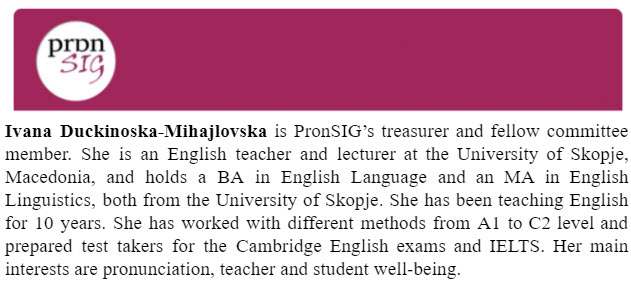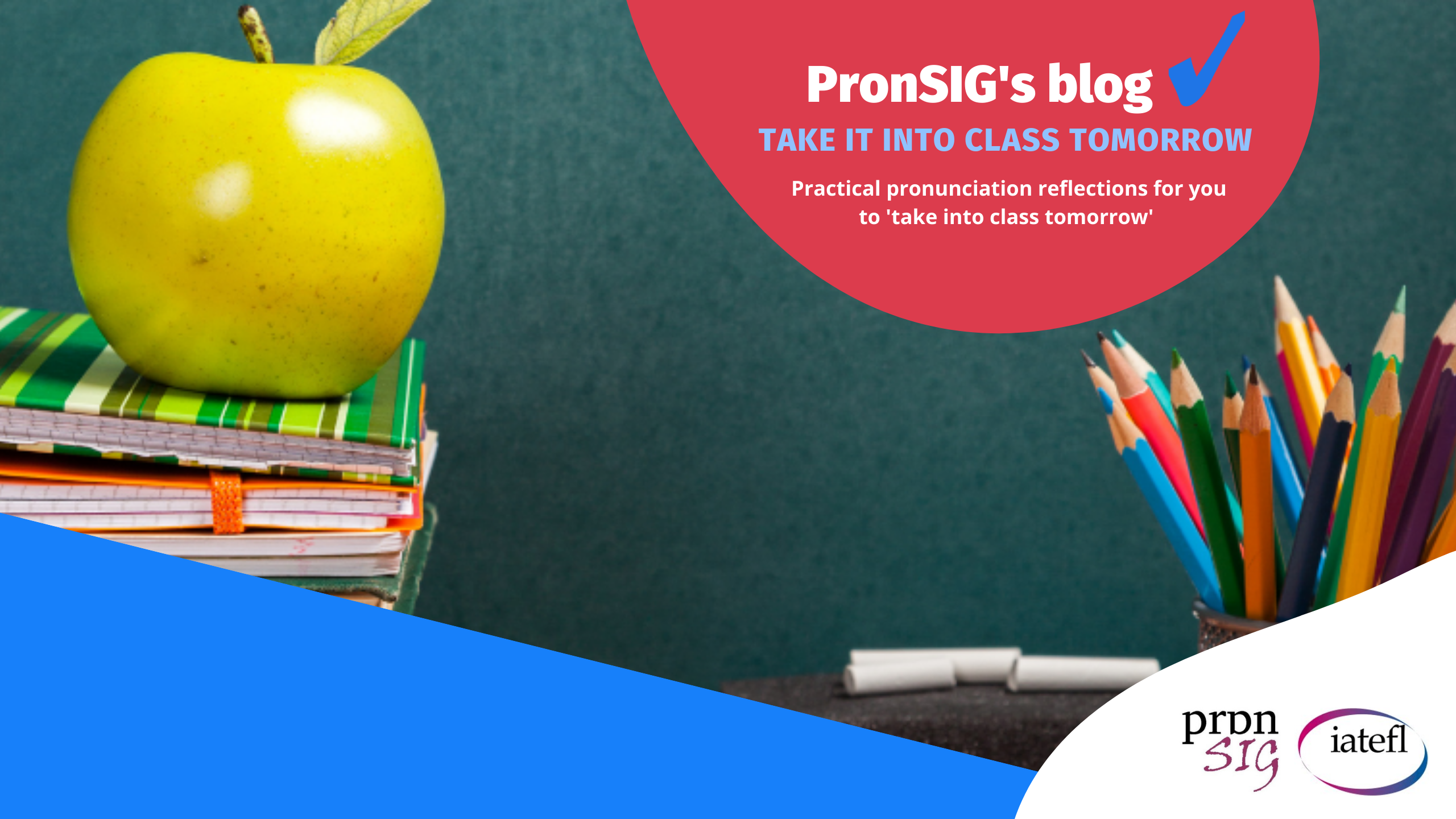by Ivana Duckinoska-Mihajlovska
Recently, we asked our social media followers if they think that reading aloud (RA) is a good pronunciation practice for students (Ss). The feedback was overwhelming with so many different opinions shared: some believe RA is a good indicator of our students’ progress, since it can work as a great diagnostic tool for testing Ss’ knowledge of graphemic-phonemic correspondence and prosody/ suprasegmental features (word and sentence stress, intonation and rhythm), while others think that RA can only be conducive to teaching pronunciation if texts are familiar to Ss and accompanied by explicit instructions. Thus, in this text, we will discuss whether RA is a possible pronunciation tool to be used in class.
What does the literature say about RA as a pronunciation tool?
RA is not the same as speaking because it is controlled, rather than communicative practice, but it still involves longer utterances, not just words or phrases, which can enable focusing on suprasegmental features as well (Gibson, 2008). However, studies show that while learners do make progress when reading aloud, that progress does not transfer to free speech, especially regarding suprasegmental features (Lázaro Ibarrola, 2011). Still, other studies reveal that more promising results can be obtained once a noticing and awareness element has been added to the RA task, which can help learners perceive a gap in their pronunciation when compared to that of their instructor (Martínez Adrián, 2014). Therefore, it seems that to make RA an effective pronunciation tool, we need to give explicit instructions and have a systematic approach as to what pronunciation feature we will target in that passage or text.
One such feature can be thought groups, also known as intonation units, chunking or pausing. Gilbert (2008) defines thought groups as stretches of words, such as phrases, clauses or short sentences that have one prominent element, or focus word. These words are usually content words (nouns, verbs, adjectives, adverbs) and their stressed syllable is normally long and clear with a change in pitch or tone. Thought groups are a key element of spoken English and dividing them in the wrong places can lead to a communication breakdown.
Teaching thought groups can be challenging since there are not many practical guidelines for learners. On the one hand, it is useful for them to listen for signals, such as a pause or drop in pitch in audio recordings, as a step towards raising awareness of such groupings. On the other hand, written English can be used as a pronunciation tool since learners can rely on punctuation as a marker for separating thought groups.
With the latter in mind, we suggest the following approach for raising awareness and practicing thought groups through RA. These are the steps:
1. Description: The teacher introduces the concept of thought groups by marking them with slashes (//) in the first part of a text passage. The teacher points out that Ss should not focus on individual words, but rather on groups of words that convey a thought.
e.g. The statue of Rocky outside the Philadelphia Museum of Art // is very popular with tourists, // who often stop to take their photo in front of it // without bothering to visit the museum itself. // This irritated Jessie Hemmons, // so last month // the 24-year-old artist knitted a bright pink jacket // and put it on the statue of the boxer. // She chose the colour // because it attracts attention*…
(Extract from Granny Graffiti p. 81, Solutions Intermediate, 3rd ed., 2016)
*The suggested thought groups are for reference purposes only; they can be divided by readers in a way most natural to them.
2. Reading: Then, Ss read and become familiar with the whole text.
3. Listening: The teacher reads the rest of text, or plays an audio, and students mark the thought groups they hear using slashes.
4. Peer correction and discussion: The teacher invites Ss to compare their answers in pairs by checking thought group boundaries.
e.g. In the sentence, She chose the colour because it attracts attention how many thought groups did you hear?
Are they clauses or phrases?
What is the prominent element in the first thought group? Is it She CHOSE the colour?, or She chose the COLOUR?
5. Controlled activity: Students practice reading the same text with the marked thought groups.
Needless to say, practicing thought groups should not stop with reading; on the contrary, Ss should be exposed to many listening tasks so that they understand the importance of grouping words together for conveying a comprehensible message (Gilbert, 2008). In addition, using RA for teaching thought groups is clearly not the only way. This post only aimed at suggesting how RA can be modified to serve as a productive pronunciation teaching tool and help our learners better understand English rhythm.
Don’t forget to check our previous blogs on pronunciation teaching here, as well as follow PronSIG on social media and leave your comments below.
References
Falla, T., & Davies, P. A. (2016). Solutions intermediate student’s book (3rd ed.). Oxford University Press.
Gibson, S. (2008). Reading aloud: a useful learning tool?, ELT Journal, 62(10), 29-36.
Gilbert, J. B. (2008). Teaching pronunciation: Using the prosody pyramid. Cambridge University Press.
Lázaro Ibarrola, A. (2011). Imitating English oral texts: A useful tool to learn English pronunciation?, Porta Linguarum, 16, 49-63.
Martínez Adrián, M. (2014). The efficacy of a reading aloud task in the teaching of pronunciation, Journal of English Studies, 12, 95-112.


